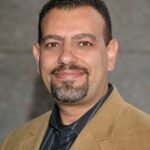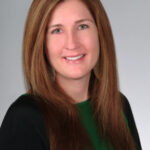The 2015 ACR Workforce Study reported that in 2015, there were 4,997 rheumatology professionals but 6,115 were needed in the U.S.1 The study predicted that by 2030 the demand will be for 8,184 professionals, but the supply is expected to only be 3,455 clinicians. Part of the reason for the shortfall is that 50% of rheumatologists are expected to retire in the next 10–15 years.1 The ACR is focused on finding solutions to the gap. In October 2021, the ACR Board of Directors approved a three-year workforce plan developed by the Workforce Solutions Committee. (Note: Learn more in the May article, “ACR Workforce Solutions.)
In the midst of this significant rheumatology workforce shortage, some practices have fared well in recruiting new physicians. To find out how they’re doing it, the ACR’s Committee on Rheumatologic Care (CORC) held a Town Hall on Physician Recruitment on April 13, welcoming representatives from four practices in different parts of the country to share the secrets behind their success stories.
Highlight Value

Dr. Soloman
Arizona Arthritis & Rheumatology Associates (AARA), Phoenix, has 16 rheumatologists and 27 advanced practice providers on staff. The big news? It currently receives more applications than it has positions to fill. Part of the practice’s approach to recruiting new rheumatologists is to make sure candidates see the value of joining the practice, said Nehad Soloman, MD, a rheumatologist and AARA’s medical director of research. The AARA offers a team approach, pairing a rheumatologist with two advanced practice providers to patient care, a three-year path to equal partnership and research opportunities.
AARA also keeps the applicant pool large by attending meetings of the Coalition of State Rheumatology Organizations (CSRO) to “interview fellows on the spot, telling them about our team and our practice,” and by maintaining strong contact with fellowship alma maters and nearby fellowship programs in Tucson and at the University of New Mexico, Dr. Soloman said. “I think part of our success is that we’ve had a lot of young blood join us in the last five years, and they tell their friends, co-fellows or folks who are still in fellowship and want to follow in their footsteps. So they bring them to the table as well.”
Build a Community

Dr. Ruth
Natasha Ruth, MD, MS, pediatric division director at the Medical University of South Carolina, Charleston, has a much smaller practice, with three (soon to be four) rheumatologists on staff. To attract new rheumatologists, Dr. Ruth emphasizes the practice’s close relationships with other groups, including the university’s adult rheumatology division and the adult rheumatology fellowship program. In fact, the adult rheumatologists take on some of the pediatric rheumatology call work, so she can promise candidates a less strenuous schedule. “That makes recruiting someone incredibly easier,” she said.
Moreover, the university’s pediatric division now has its own fellowship program and benefits from two emeritus pediatric rheumatologists who teach the fellows one day a week. They also contribute to an overall feeling of community within the pediatric rheumatology division that recruits find appealing, Dr. Ruth said. “We have these emeritus-status professors who are still part of our group, plus we are enmeshed in our adult rheumatology program, and we have lots of conferences that we share, division rounds, even social events and gatherings, so it really feels like a bigger group.”
Outline Career Paths
In the Midwest, Steven Craig, MD, is one of 13 rheumatologists at the Iowa Arthritis and Osteoporosis Center (IAOC), Urbandale, which he describes as “one of the larger rheumatology-only, single-specialty, single-building groups.” He also serves as IAOC’s vice president.

Dr. Craig
The practice has struggled with recruitment in the past, particularly because there are no nearby fellowship programs, Dr. Craig said. But the Des Moines metropolitan area, where IAOC is located, does have internal medicine residency programs with clinical rotations. After learning the rotating residents were third-years who had already decided on their career paths, Dr. Craig worked on convincing the program administrators to send second-year residents instead. The approach worked to interest more residents in rheumatology. “Sure enough, we’ve actually placed a couple of rheumatology fellows, and I am excited to report that starting this summer, after graduation, one of the residents who came through earlier in his career is actually going to join our group,” he said.
Like Dr. Soloman, Dr. Craig has also seen the effectiveness of word-of-mouth recruitment as new hires talk with colleagues at meetings or on social media. Once that door is opened, the IAOC can extol its advantages, such as its very clear path to progress from associate to partner. “That’s very much appreciated from these folks,” Dr. Craig said. “If they’re going to make a commitment to move to the Midwest, they want to make certain that the long-term picture is laid out for them and what’s available to them. And that’s what we try to do.”
Draw from Fellows

Dr. Karp
As a medium-sized rheumatology division in Dallas, the University of Texas Southwestern Medical Center (UTSW) Division of Rheumatic Diseases has 25 faculty members who provide in-patient services to the university hospital and a county hospital, with about 900 beds each, as well as office rheumatology care at several other locations and the Dallas VA, according to David Karp, MD, PhD, chief of the division. Despite the heavy workload—“four to six weeks of in-patient consults annually and seeing patients at the hospitals for 14 days at a stretch”—he said he hasn’t had trouble enticing new clinical faculty.
Dr. Karp attributed much of the recruitment success to the large fellowship program at UTSW. “We train eight fellows, four each year. Last year, we had 220 applicants for our four positions, so we can be very intentional about our selections for fellows with the idea that some of them might become our next faculty members,” he explained. It also likely helps that the division draws from the internal medicine program, which is headed by a rheumatologist.
“We’ve been very lucky in our ability to hire the right people,” Dr. Karp added, “and I’m just sorry that we can’t hire and train more so that they can go work in what I’ve heard tonight are some really great opportunities in the community.”
The Town Hall on Physician Recruitment was co-moderated by:
- Marcus Snow, MD, FACR, assistant professor, internal medicine, and practicing rheumatologist, University of Nebraska Medical Center Division of Rheumatology, Omaha, and a member of CORC; and
- Donald E. Thomas Jr., MD, FACP, FACR, RhMSUS, CCD, practicing rheumatologist, Arthritis and Pain Associates of Prince George’s County, Greenbelt, Md., and a member of CORC.
The ACR Workforce Solutions Committee is currently working to address the workforce shortage and will be presenting practical options in coming months.
Leslie Mertz, PhD, is a freelance science journalist based in northern Michigan.
Reference
- Battafarano DF, Ditmyer M, Bolster MB, et al. 2015 American College of Rheumatology workforce study: Supply and demand projections of adult rheumatology workforce, 2015–2030. Arthritis Care Res (Hoboken). 2018 Apr;70(4):617–626.



